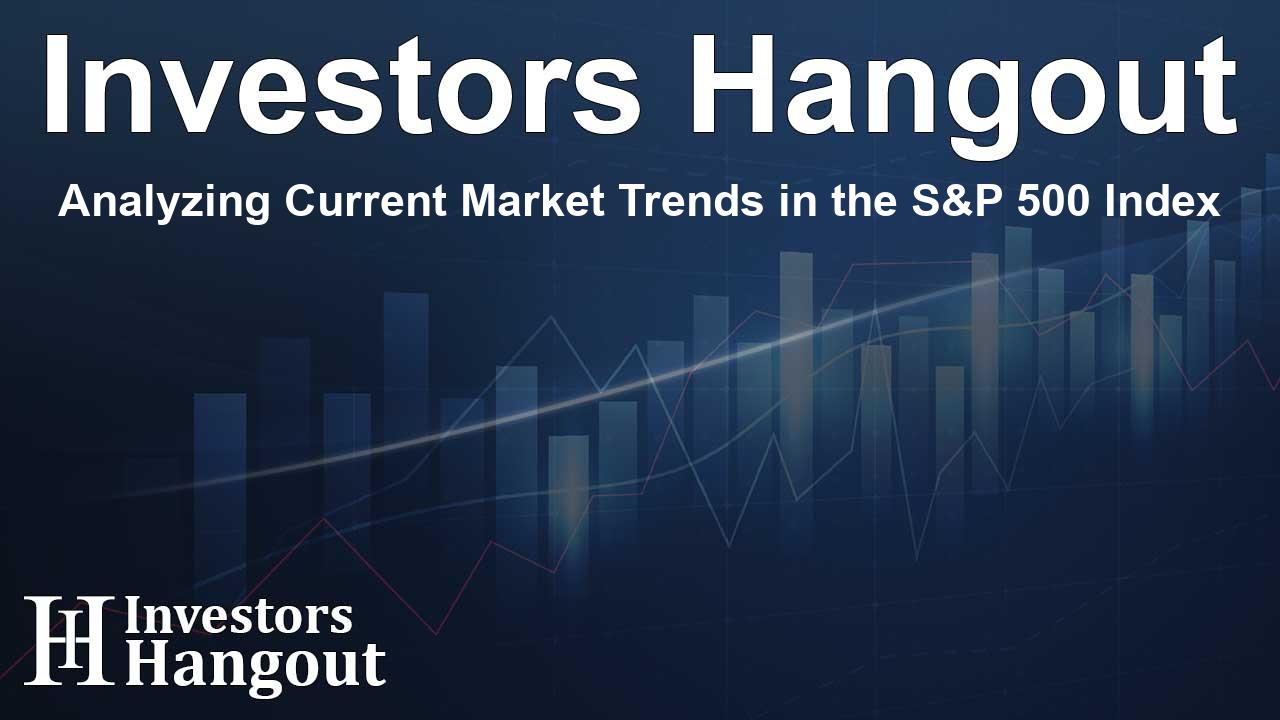Analyzing Current Market Trends in the S&P 500 Index

Introduction to Current Market Dynamics
The ongoing performance of major stock indices in the US, including the S&P 500, has caught the attention of investors and analysts alike. Recently, external factors such as trade tensions and market volatility have played a significant role in shaping the market landscape. In particular, the S&P 500 has experienced fluctuations that have experts closely monitoring its direction.
Impact of External Factors on the Market
Recent commentary regarding trade policies has rekindled market uncertainties. As discussions around tariffs resurface, particularly with the US Presidential elections approaching, participants are cautious. The S&P 500 experienced a notable drop, shedding 0.75%, while key tech stocks, particularly Nvidia, have expressed significant volatility as well.
Understanding the VIX's Role
The Volatility Index (VIX) has historically indicated heightened implied volatility during periods of political uncertainty, especially in October during US presidential election years. With the average VIX peaking at higher levels, the impact on the S&P 500 becomes increasingly pronounced. As we analyze these fluctuations, the ripple effect on investor sentiment is noteworthy.
Current Sentiment and Market Positions
Market sentiment performed differently across major indices, with the Russell 2000 remaining relatively unchanged compared to declines in the Nasdaq 100 and Dow Jones Industrial Average. These movements highlight the nuanced variances in market performances, which many investors are keen to understand.
Key Resistance Levels: Understanding Market Signals
From a technical standpoint, the S&P 500 is exhibiting signs of exhaustion after a consistent rally, prompting analysts to reassess resistance levels. The critical 5,930 mark has emerged as a significant point, where a break below the 5,675 level could signify deeper corrections. Conversely, achieving a daily close above 5,930 could indicate a continuation of upward momentum.
Analyzing the Ascending Wedge Pattern
Specifically, the S&P 500 CFD Index reflects an 'Ascending Wedge' pattern, a technical signal often associated with potential downward movements. Observing these patterns helps investors gauge the strength of market trends and make informed decisions based on the prevailing volatility.
Future Market Anticipations
As market conditions evolve, analysts suggest that we may see changes in the VIX that could influence market sentiment. With tight correlations between the VIX and MOVE Index, watching these indicators will be crucial for understanding upcoming market shifts. The nature of volatility in relation to the S&P 500 in the coming weeks will likely dictate trading strategies across various sectors.
Conclusion: Preparing for Market Changes
As we navigate this tumultuous market environment, the S&P 500, alongside influences from political narratives and macroeconomic factors, warrants close observation. Investors must remain alert to both supporting trends and potential signs of market fatigue, especially as key resistance levels are tested.
Frequently Asked Questions
What is the VIX, and why is it important?
The VIX, or Volatility Index, measures market expectations for volatility and is an essential indicator for assessing market sentiment and risks.
How does current political sentiment affect the S&P 500?
Political narratives, particularly regarding trade policies and elections, significantly influence investor confidence and market fluctuations in the S&P 500.
What are key resistance levels to watch in the S&P 500?
Key resistance levels, particularly around 5,930, can signal potential market reversals, making them critical areas for traders to monitor.
What patterns are analysts observing in the market today?
Analysts are noting an 'Ascending Wedge' pattern in the S&P 500, highlighting possible downward momentum, which is essential for forecasting market movements.
How should investors prepare for potential market volatility?
Investors should maintain a diversified portfolio and monitor key market indicators, including the VIX and S&P 500 resistance levels, to navigate potential volatility effectively.
About The Author
Contact Caleb Price privately here. Or send an email with ATTN: Caleb Price as the subject to contact@investorshangout.com.
About Investors Hangout
Investors Hangout is a leading online stock forum for financial discussion and learning, offering a wide range of free tools and resources. It draws in traders of all levels, who exchange market knowledge, investigate trading tactics, and keep an eye on industry developments in real time. Featuring financial articles, stock message boards, quotes, charts, company profiles, and live news updates. Through cooperative learning and a wealth of informational resources, it helps users from novices creating their first portfolios to experts honing their techniques. Join Investors Hangout today: https://investorshangout.com/
The content of this article is based on factual, publicly available information and does not represent legal, financial, or investment advice. Investors Hangout does not offer financial advice, and the author is not a licensed financial advisor. Consult a qualified advisor before making any financial or investment decisions based on this article. This article should not be considered advice to purchase, sell, or hold any securities or other investments. If any of the material provided here is inaccurate, please contact us for corrections.
